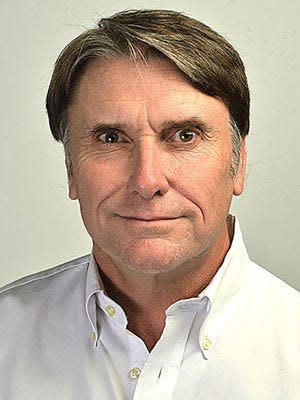Thanks to Canadian wildfires, masking just ain't what it used to be
Three years ago we were wearing masks inside and taking them off when we went outside. Today we’re wearing them outside and taking them off when we go inside.
In this Decade of the Facemask, you wonder when the covering will effectively become a non-optional article of clothing, like pants. I had not overtly thrown out my 2020-21 masks, but like ink pens and reading glasses they had all kind of evaporated somewhere into the ether; I still find them occasionally in the pocket of a jacket I haven’t worn in a while, or in the garage where they came in handy for checking the oil on the riding mower.
Compared with the original, Facemask II — necessitated by billowing smoke from Canadian wildfires — didn’t generate the same intensity as its predecessor. No one was marching in the streets shrieking that face coverings were an attack on their personal freedom. Nor did any governments mandate masks; they didn’t need to. In places like New York City you had a choice — you could wear a mask or you could walk around hacking and rasping like Phyllis Diller.

Nor did anyone bother to get cute about masks, sewing them out of cloth printed with musical notes or a fake mouth. This was business. You didn’t go to the boutique, you went straight to the hardware store and bought lung protection normally associated with horsehair plaster demolition.
The irony was that while the smoke was an irritant, the coronavirus was deadly. COVID’s mistake was not being visible. I’m sure God has days like that too.
It never got so bad in my neck of the woods that we needed them, but the haze was much like the humidity that hangs over the South in August. Still, it doesn’t seem fair in the sense that these weren’t even our wildfires.
When wildfires raged on the West Coast and the smoke wafted east you thought, “OK, fair enough. It’s our mess, we’ll deal with it.” But these are Canadian fires, from a nation that we expect to smile politely and send us syrup.
I guess they don’t sweep their forests — although you can’t rule out that House Republicans will try to build a wall. But I’m starting to wonder about Canada. First they gave us Justin Bieber, now this?
And you never want to wish anyone ill, but there is some harmonic symmetry that James Watt went out of this world under an orange haze that, while not specifically of his creation, was a product of the policies he held dear as Interior Secretary under Ronald Reagan.
By 1972, Democrats and Republicans alike had pretty much come to the conclusion that clean air and water were good things. The major environmental pillars that remain to this day were the product of a Republican administration.
That changed in 1981 when Reagan appointed Watt to Interior and Ann Gorsuch to EPA, two people who despised the environment, particularly when it interfered with corporate profits.
Lots of people in industry felt this way of course, but until then it never would have occurred to anyone to appoint pollution sympathizers to environmental agencies that were supposed to protect us against pollution. It was crazy, it would have been like, ha ha, I don’t know, appointing Betsy DeVos to be Secretary of Education or something.
Sports: Smithsburg's Brianna Ellis headlines All-County girls lacrosse
Both Watt and Gorsuch flamed out spectacularly, but Watt was easily the more bizarre of the two. His first act in office was to order that the buffalo on Interior’s insignia — which had faced left since its 1849 inception — be turned to face right, and later said his idea of diversity was “a Black, a woman, two Jews and a cripple.”
Believing that rock 'n' roll was the devil’s music, he banished the Beach Boys from the annual July 4 celebration on the National Mall — not realizing that Nancy Reagan was a fan.
Watt was soon surfing for a new job.
Tim Rowland is a Herald-Mail columnist.
This article originally appeared on The Herald-Mail: On Canadian wildfires, masking & former Interior Secretary James Watt
